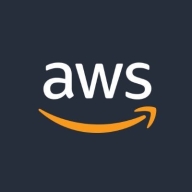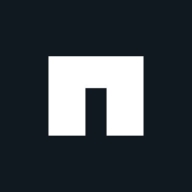

Amazon CloudWatch and NetApp Data Infrastructure Insights compete in the monitoring and infrastructure management category, with CloudWatch integrating well with AWS and NetApp excelling in data visibility and management. NetApp holds an edge due to its extensive feature set, despite higher costs.
Features: Amazon CloudWatch offers seamless integration with AWS, delivering real-time data and monitoring solutions with features like event triggering and log management. NetApp Data Infrastructure Insights excels in aggregating metrics and providing a detailed view of enterprise data environments, offering substantial infrastructure visibility and advanced analytics for troubleshooting.
Room for Improvement: For Amazon CloudWatch, users seek better dashboard customization, improved application performance monitoring, and scalable pricing structures. NetApp Data Infrastructure Insights could benefit from simplifying its console complexity, enhancing report management, and offering more advanced anomaly detection features.
Ease of Deployment and Customer Service: Amazon CloudWatch is optimized for AWS public cloud users, featuring varied technical support tiers. NetApp Data Infrastructure Insights, compatible with public, private, and hybrid clouds, receives mixed feedback on initial support responsiveness and console experience.
Pricing and ROI: Amazon CloudWatch uses a pay-as-you-go model that is financially advantageous for AWS users. NetApp’s pricing, based on device use and capacity, is higher yet justified by its extensive features. Users call for clearer, simpler licensing from NetApp, as its comprehensive data visibility is seen as a valuable investment.
| Product | Market Share (%) |
|---|---|
| Amazon CloudWatch | 2.3% |
| NetApp Cloud Insights | 0.6% |
| Other | 97.1% |


| Company Size | Count |
|---|---|
| Small Business | 17 |
| Midsize Enterprise | 9 |
| Large Enterprise | 24 |
| Company Size | Count |
|---|---|
| Midsize Enterprise | 5 |
| Large Enterprise | 8 |
Amazon CloudWatch integrates seamlessly with AWS, providing real-time monitoring and alerting features. Its interface supports task automation, enhancing troubleshooting and analytics capabilities, while offering strong security and scalability at a cost-effective rate.
Amazon CloudWatch is an impactful platform for monitoring AWS resources and managing application performance. It simplifies infrastructure performance monitoring by providing comprehensive analytics capabilities, including application insights and event scheduling. Users appreciate CloudWatch for its detailed metrics, dashboards, and support in issuing alerts to detect anomalies. It efficiently tracks performance, optimizes resource utilization, and ensures service availability. CloudWatch is recognized for its robust alerting features and integration with other AWS services, further supporting its resource monitoring capabilities. However, there is room for improvement in dashboard customization, log streaming speed, and integration with non-AWS services. Enhancements in API integration, machine learning features, and support for third-party tools are also desired.
What features does Amazon CloudWatch offer?Industries implementing Amazon CloudWatch often focus on optimizing IT infrastructure. Companies in sectors like finance and e-commerce rely on its monitoring and alerting capabilities to ensure service uptime and performance. The platform's automation and analytics features empower teams to proactively manage performance and detect potential issues promptly.
NetApp Data Infrastructure Insights delivers comprehensive capabilities like visibility, usage optimization, and real-time alerting to manage and report resource utilization efficiently.
NetApp Data Infrastructure Insights focuses on strengthening data security and enhancing performance monitoring. Its sophisticated analytics tools offer clarity on complex resource interdependencies, reducing troubleshooting times. With advanced dashboards and data visualization, users can efficiently monitor performance metrics and optimize infrastructure management. While it boasts numerous features, improvements are needed in reporting, affordability, and simplifying the interface.
What are the key features of NetApp Data Infrastructure Insights?Organizations implementing NetApp Data Infrastructure Insights across industries can expect improved analysis capabilities and security measures. From finance to healthcare, entities rely on its ability to integrate diverse environments like virtualization or storage management, enhancing predictability and efficiency in their operations.
We monitor all Cloud Monitoring Software reviews to prevent fraudulent reviews and keep review quality high. We do not post reviews by company employees or direct competitors. We validate each review for authenticity via cross-reference with LinkedIn, and personal follow-up with the reviewer when necessary.